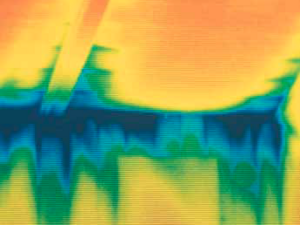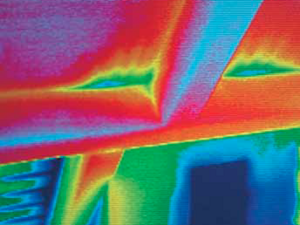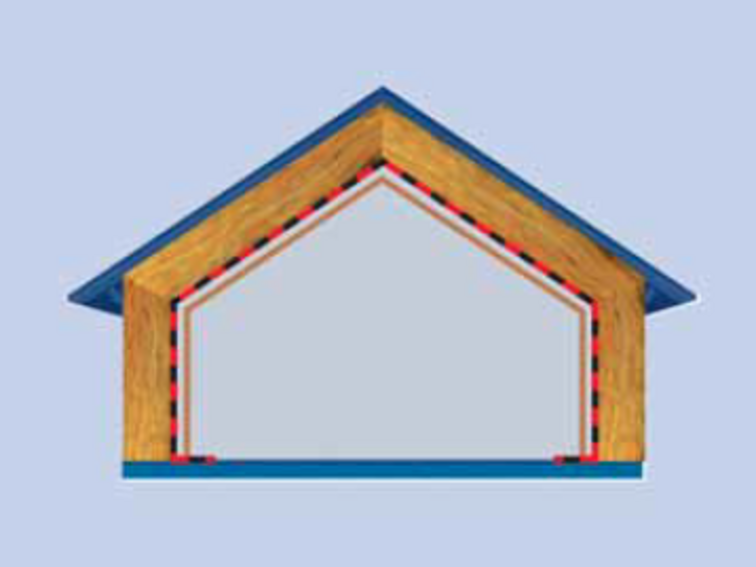Heat losses in the building shell
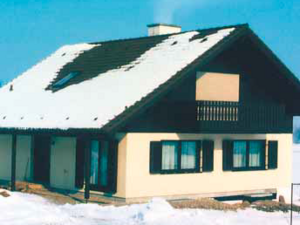
30 years ago, our buildings were relatively poorly insulated and highly permeable to air. In order to obtain the desired room temperature, the building was simply heated with greater intensity.
Proportion of energy loss
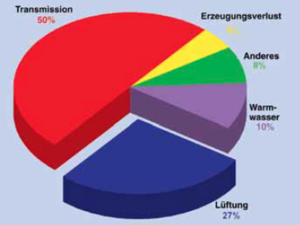
In the meantime, a big shift in thinking has taken place. Today, new buildings or renovated objects are equipped with optimised thermal insulation. Thus heat loss as a result of leaks in the building shell is of even greater consequence. In the case of well-insulated residential buildings, the proportion of energy loss due to uncontrolled air change can be up to 30% of the total energy requirement, and in the case of highly thermally insulated buildings it may even be up to 50%.
Heat loss
Heat loss due to ventilation
Only since the event of new, well insulated houses have we found that good airtightness of the building shell is of the utmost importance for energy needs and living climate. On the one hand, heat losses due to ventilation make up a large part of the energy consumption, while on the other hand, an excessive air movement inside the building has very negative effects on the living comfort. Moreover, the danger of ambient air escaping in an uncontrolled manner into the construction, thus leading to heavy water vapour condensation, should not be underestimated. The result is the deterioration of thermal insulation capacity, mould formation or even destruction of the load-bearing wooden components.
Air change
Pollution of ambient air

The ambient air is loaded continuously by the activities of the occupants or vapours of building materials and interior facilities. This level of contamination must be limited to a tolerable level through sufficient supply of fresh air.
Air change and air humidity
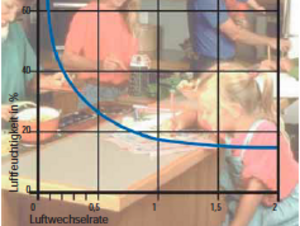
Because of people, indoor plants and drying laundry, moisture always accumulates in a house, which must be ventilated away. The smaller the air change rate, the higher the air humidity. Without air change, the ambient air in occupied buildings would not be at all able to absorb the entire water vapour. produced (In a 4-person household, as much as 10 l of water vapour is produced every day!)
Optimal air change
In assessing the optimum air change, among other things, we must take into account four parameters:
1. Reduction of heat loss
2. Prevention of construction damage due to moisture
3. Adequate supply of fresh air
4. Comfort/cosiness
- The third point is in stark contrast to the first one. Let us first look at the problem of fresh air supply.
The air change rate
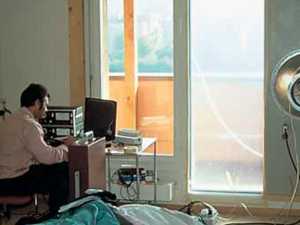
The n50 measurement
A vacuum of 50 Pascal (Pa) is artificially generated by fans in a building or even in a single room. The amount of sucked air is measured. It is equal to the amount of air that flows through the various leaking points. It is then converted to volume capacity and hour. The result indicates how many times per hour the whole ambient air is exchanged at a pressure difference of 50 Pa.

